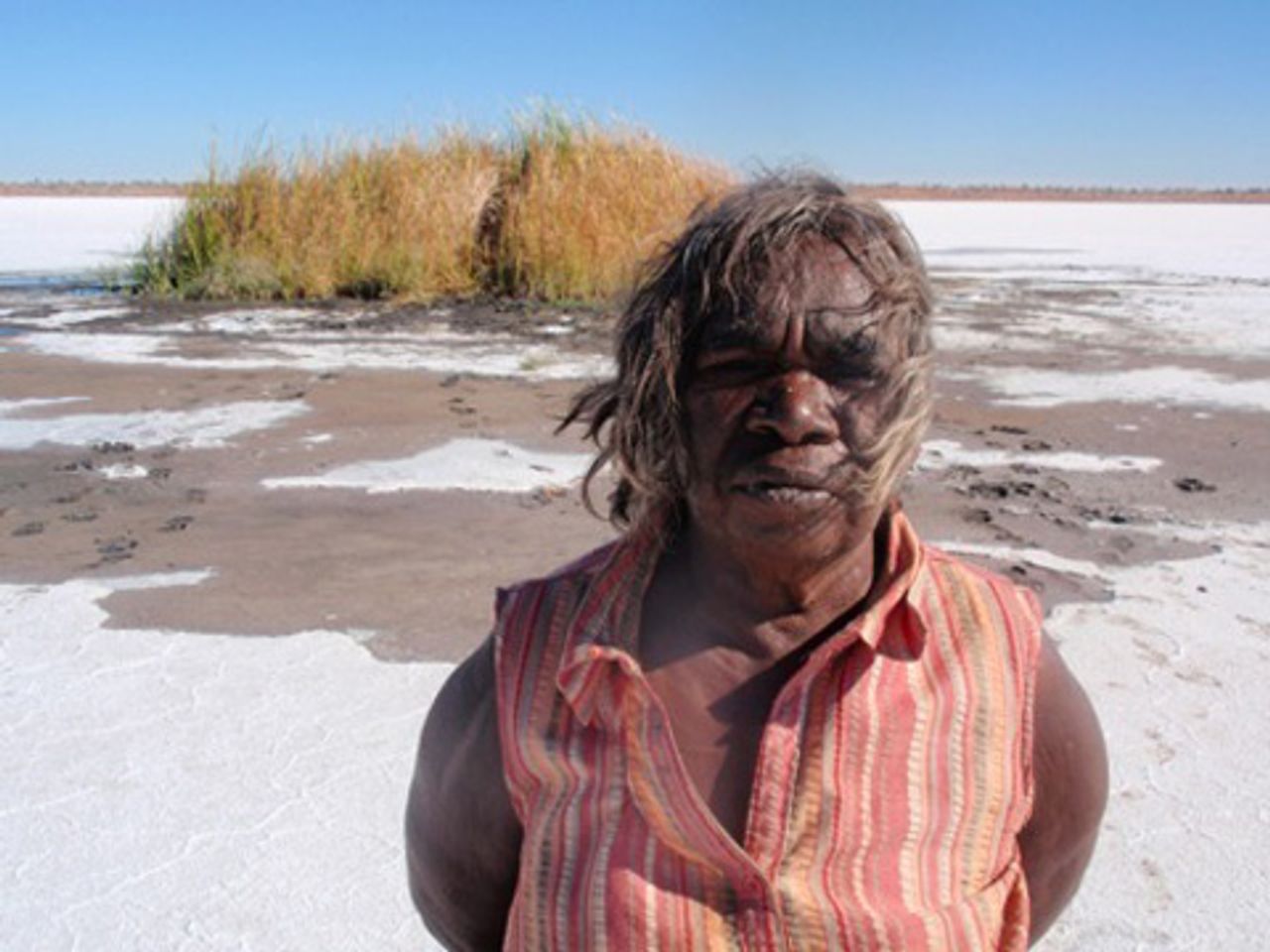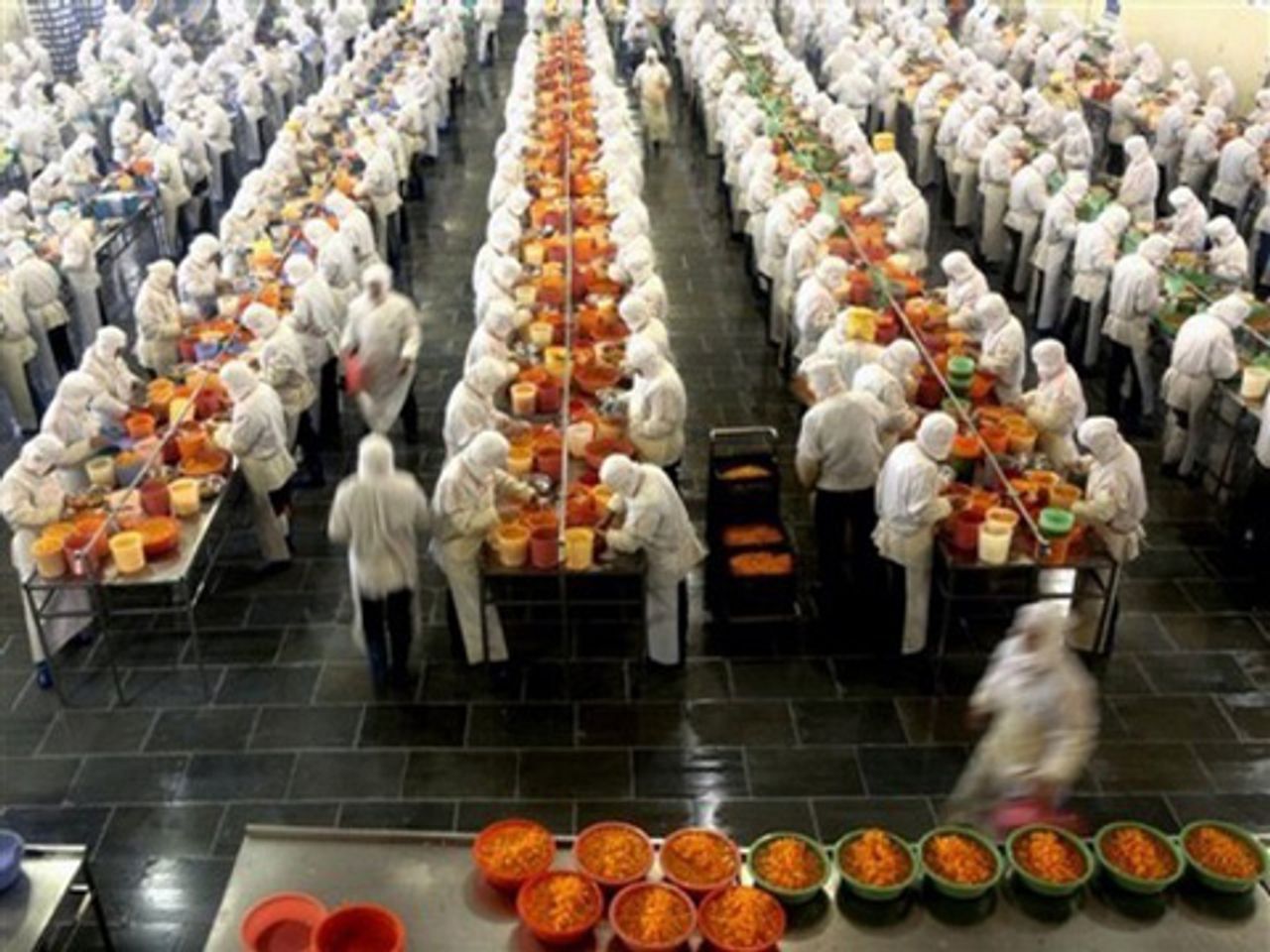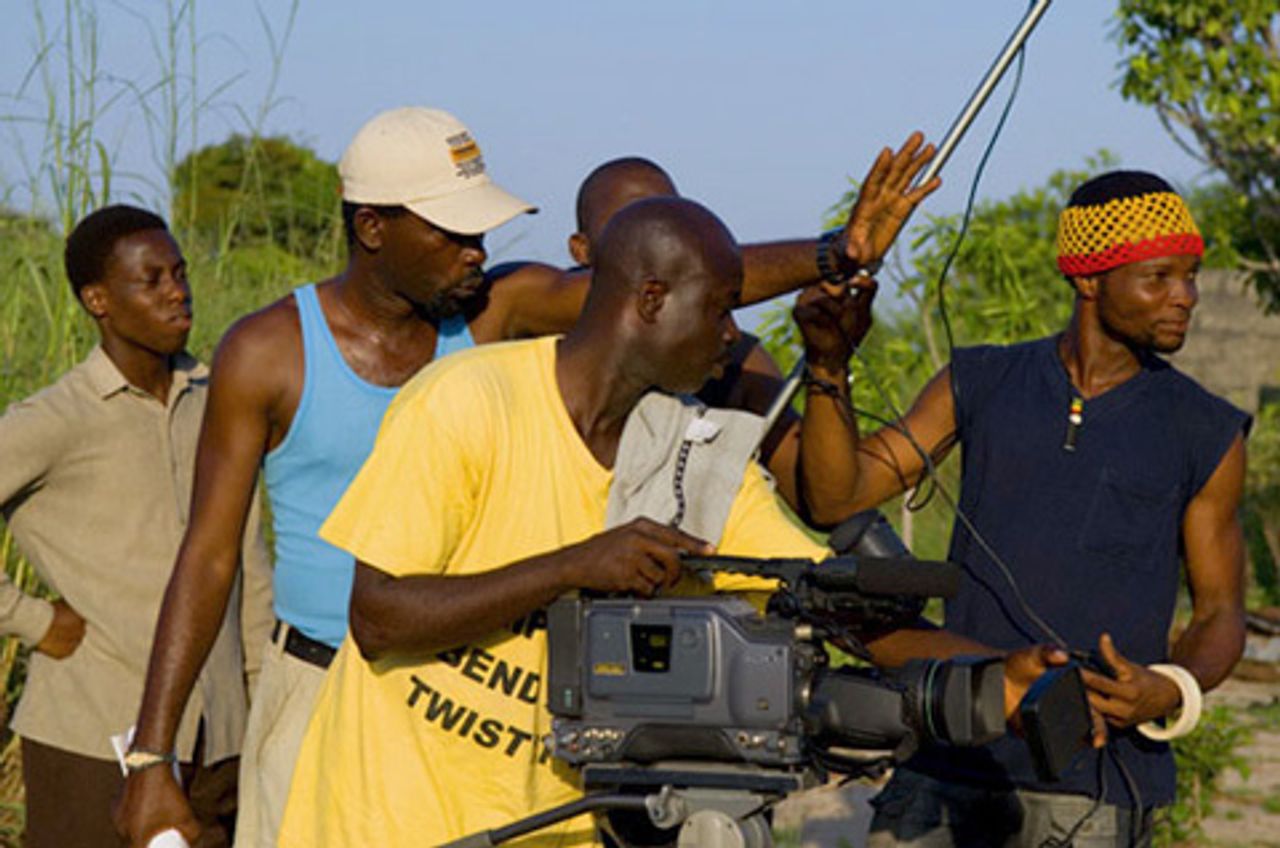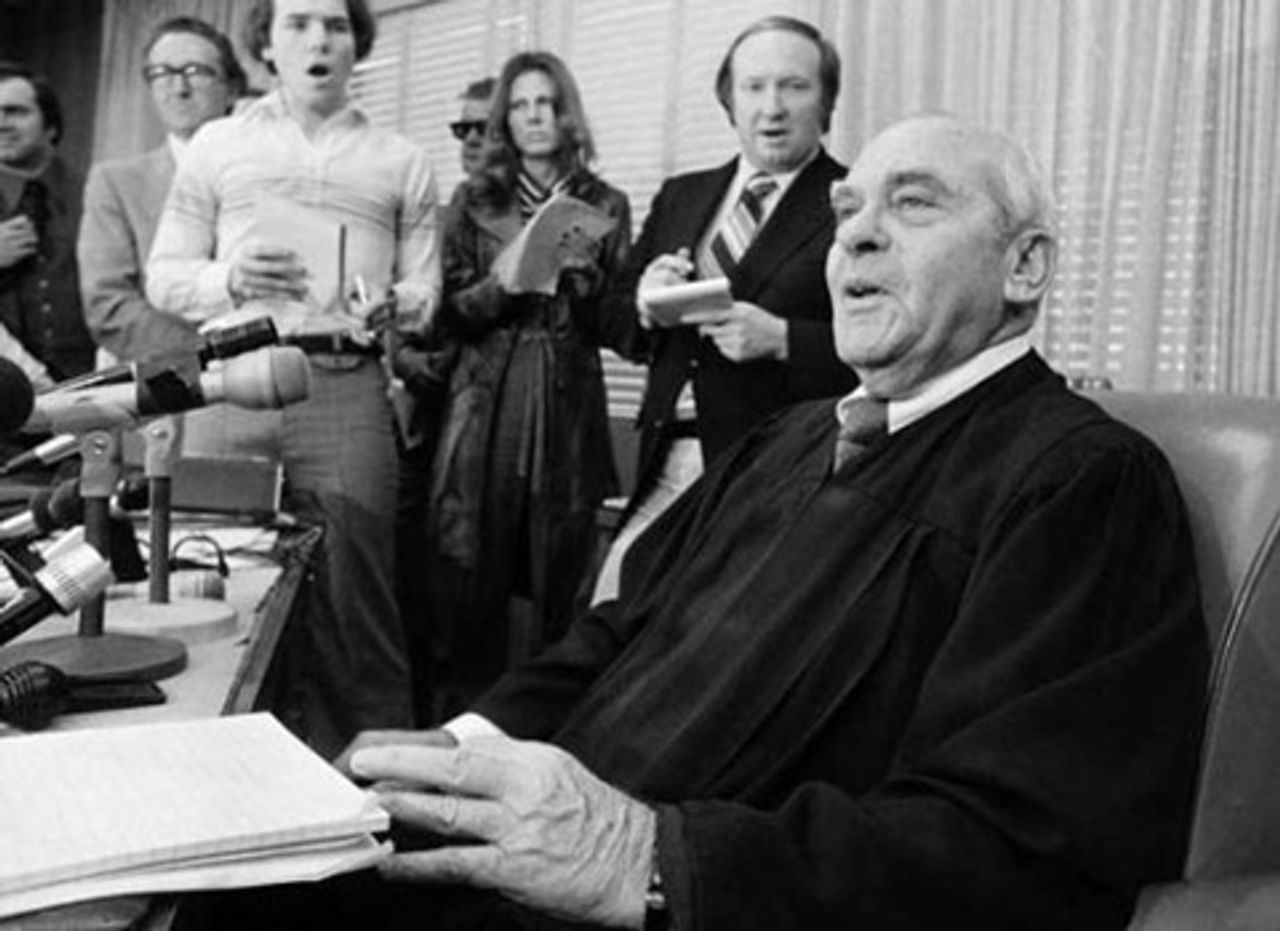This is the third in a series of articles on the 56th Sydney Film Festival. Part 1 was posted on July 9 and part 2 on July 10.
Thirty-one documentaries were screened at this year’s festival. Some of the better works we watched included Contact, Food Inc., Nollywood Babylon and Roman Polanski: Wanted and Desired.
Contact records an historic 1964 encounter in Australia’s Great Sandy Desert between two government patrol officers and a small group of Aborigines who had not seen a white person before and were unaware that the country had been colonised for almost 200 years. Directed by Martin Butler and Bentley Dean, the 80-minute documentary weaves together archival material, on-location footage and contemporary interviews with surviving participants of the event.
 In the early 1960s, the British government began using South Australia’s Woomera rocket range, the largest test range in the world, to trial its Blue Streak ballistic missile. The first test was scheduled for June 1964 and two Weapons Research Establishment officers were dispatched to the 140,000 square mile rocket dump zone to discover whether any Aborigines were present and to move them out of range. In fact, a small group of Martu people—eight women and twelve children—were still leading a traditional hunter-gather existence in the harsh and isolated desert.
In the early 1960s, the British government began using South Australia’s Woomera rocket range, the largest test range in the world, to trial its Blue Streak ballistic missile. The first test was scheduled for June 1964 and two Weapons Research Establishment officers were dispatched to the 140,000 square mile rocket dump zone to discover whether any Aborigines were present and to move them out of range. In fact, a small group of Martu people—eight women and twelve children—were still leading a traditional hunter-gather existence in the harsh and isolated desert.
First attempts to locate the group were unsuccessful. The Martu people fled, believing the patrol officers were “devils” and had come to eat them. Yuwali, who was 17 years old in 1964, thought that the patrol officers’ four-wheel drive vehicles were “rocks that had come alive” and the headlights “monsters’ eyes”.
Contact was eventually established three months later when the officers found the women and children and persuaded them to leave the missile drop-zone. They were transported to a Christian mission at Jigalong 200 kilometres away, bringing their nomadic existence to an end.
Remarkably, the first moments of the encounter were recorded on 16mm film; the thin and mostly naked group tentatively approaching the patrol officers and then running away. Prior to its inclusion in the documentary, this footage had only been seen by a handful of people.
Contact, which won the festival’s documentary prize, is a sensitive and intelligent work. Footage of the unforgiving desert landscape and time-lapse night shots by Bentley Dean are striking. Dean was cinematographer for The President versus David Hicks (2004) and A Well-Founded Fear (2008), the latter tracing the fate of asylum seekers recently deported by the Australian government.
Health and modern food production
Food, Inc. directed by Robert Kenner (Two Days in October and The American Experience) is an important exposure of the giant food corporations and points to the incompatibility between a system based on private ownership and profit and the production of sustainable, healthy food. Significantly none of the giant food corporations mentioned in the documentary agreed to be interviewed about their products.
 The documentary is largely based on Eric Schlosser’s Fast Food Nation (2001) and Michael Pollan’s, The Omnivore’s Dilemma, (2006) and In Defense of Food: An Eater’s Manifesto (2008). Pollan and Schlosser provide commentary for Food Inc.
The documentary is largely based on Eric Schlosser’s Fast Food Nation (2001) and Michael Pollan’s, The Omnivore’s Dilemma, (2006) and In Defense of Food: An Eater’s Manifesto (2008). Pollan and Schlosser provide commentary for Food Inc.
Food Inc. notes that eating habits have changed more in the last 50 years than in the previous 10,000 and explains how modern food production has impacted on consumption. Kenner contrasts large-scale industrial farming methods and the relentless drive for profit against organic farming operations, both small-scale and large. Some of the facts and figures are chilling.
Such is the monopolisation of the meat industry, for example, that in the 1970s the top five US meatpacking companies controlled 20 percent of the local market. Today the top five have 80 percent, with regulatory agencies virtually controlled by these giant companies. In 1972 the Food and Drug Administration (FDA) conducted approximately 50,000 food safety inspections but by 2006 this had dropped to only 9,164.
Corn production is heavily subsidised in the US and about 30 percent of the national land mass is used for corn cultivation. Corn is included in countless foods items, fast foods in particular, which makes it cheaper than fresh products.
Corn is also now a major food item for beef cattle, but this has increased E.coli infections, which can evolve in the animals into E.coli 757 with deadly results. The documentary reveals how this led to the death of a two-year-old boy who had eaten E.coli 757 contaminated beef. The company responsible for the infected meat did not withdraw it from supermarkets until 16 days after the child’s death and did not even bother to apologise to the child’s family.
According to Michael Pollan, “Cows are not designed by evolution to eat corn but to eat grass. And the only reason we feed them corn is because it’s really cheap and makes them fat quickly.... The industrial food system is always looking for greater efficiency but each new step in efficiency leads to problems. If you take feedlot cattle off their corn diet and give them grass for five days, they will shed 80 percent of the E. coli in their gut.”
One of the documentary’s strongest scenes shows an immigrant family, who have been working all day, eating a fast food dinner in their car. “It’s quicker that way,” they explain, “and cheaper”. Food Inc. points out that increased fast food consumption has led to one in three Americans born after 2000 contracting early-onset diabetes. This figure rises to one in two amongst ethnic minorities.
Food Inc. is aimed at popularising and making more accessible the publications on which it’s based. It is limited, however, by an underlying belief that food production for private profit is here to stay. Stonyfield Organic CEO Gary Hirshberg, who sold his business to Wal-Mart, tells the documentary: “We are not going to get rid of capitalism. Certainly we are not going to get rid of it in time to arrest global warming and reverse the toxification of our air, our food and our water. We need to be much more urgent.”
Kenner’s documentary fails to challenge this outlook. Its central claim is that consumer boycotts and popular demand for more organic food products will force major retailers to improve food quality. Kenner’s documentary concludes with an audience “to do” list, which, the movie insists, will pressure the food corporations to produce healthier and safer products.
Low budget production in Nigeria
Nollywood Babylon by Canadian directors Ben Addelman and Samir Mallal explores the origins and influence of Nollywood, the popular name for Nigerian low-budget movies. By volume Nigeria is now the second largest film producer in the world, its filmmakers churning out over 2,500 low-budget features a year, or about 200 per month.
Shot on video, the movies go direct to DVD or VCD and are sold in their thousands for about $2 in street markets, with some distribution in other English-speaking Africa countries. Production times are generally no more than two weeks and most budgets around $10,000.
 The documentary points to the mass poverty afflicting the Nigerian masses, particularly those in massive Lagos shanty towns. Per capita GDP is lower today than when Nigeria gained independence from Britain in 1960. Over 57 percent of the population live on less than $US1 per day, inflation is running at 15 percent, and mass unemployment is endemic.
The documentary points to the mass poverty afflicting the Nigerian masses, particularly those in massive Lagos shanty towns. Per capita GDP is lower today than when Nigeria gained independence from Britain in 1960. Over 57 percent of the population live on less than $US1 per day, inflation is running at 15 percent, and mass unemployment is endemic.
The extraordinary rise of Nollywood in the early 1990s, following the collapse of the Nigerian economy, was made possible with the development of cheap video cameras, digitalisation and mass demand for local movies. Nollywood movies are a mix of crime and voodoo witchcraft stories, comedies, melodramas about Nigerian city life, and religious tales.
Living in Bondage (1992), the first Nollywood production, for example, is a morality tale about one man’s involvement in a voodoo cult and its insistence that to become rich he must sacrifice his wife. Like many of the early Nollywood products it was funded by a Lagos electronics retailer.
Nollywood Babylon follows young director Lancelot Oduwa Imasuen making Bent Arrows, his 157th production. He begins shooting each day by holding a joint prayer session with his actors and crew.
Veteran director Eddie Ugbomah, who made films in the 1970s and 1980s before the local industry collapsed, is interviewed. A critic of Nollywood, or at least its poor artistic standards, Ugbomah says: “The great Nigerian film has not yet been made because Nollywood filmmakers are not interested in making great films, only in profit.”
Nollywood Babylon also reveals the increasing involvement of Christian and Muslim fundamentalist sects in local film production. It notes that scores of bankrupt Lagos factories have been transformed into fundamentalist churches. The documentary interviews former actress Helen Ukpabio, now one of Nigeria’s leading film producers and head of the country’s largest Christian church. She explains how her church uses Nollywood-style movies to recruit. Nollywood Babylon, unfortunately only touches on this issue.
Nollywood is obviously fulfilling the need for cheap entertainment but contrary to those European and American film writers now infatuated with the genre, bad art desensitises and discourages critical thought. The increasing dominance of religious fundamentalist groupings in Nollywood productions and Nigeria’s repressive censorship laws is testimony to this fact.
Media hysteria
Roman Polanski: Wanted and Desired is about the prosecution of the talented film director in 1977 for unlawful sex with a minor, 13-year-old Samantha Geimer, and his decision, following frenzied media coverage of his trial, to leave the US.
Polanski is best known for Repulsion (1965), Cul de Sac (1966), The Fearless Vampire Killers (1967), Rosemary’s Baby (1968), Chinatown (1974) and The Pianist (2002), to name just a few of the 30 movies produced during his five and a half decade career.
Director Marina Zenovich’s approach to her subject is measured, drawing out each stage of the sex abuse case and Polanski’s eventual plea bargain deal on one felony count of illegal sex. The feature-length documentary exposes how hysterical media reportage and the illegal behaviour of presiding Judge Laurence J. Rittenband made a fair hearing of the case for Polanski and Geimer impossible.
Zenovich provides some background detail about the tragic circumstances of Polanski’s early life—the murder of his Jewish parents, the Nazi occupation of Poland—and the terrible psychological impact of the murder of his pregnant actress wife, Sharon Tate, and four others in California in August 1969. Scandalously some section of the American media initially claimed that Polanski was involved in satanic drug rituals and suggested that he had murdered his wife.
 Judge Laurence J. Rittenband briefs the media
Judge Laurence J. Rittenband briefs the media
Rittenband, who had presided over the Elvis and Priscilla Presley divorce and other celebrity cases, however, was determined to use the Polanski case to lift his public profile. The judge ignored recommendations from the parole board and two court-appointed psychiatrists that Polanski be given parole and conspired to try and imprison the filmmaker.
The judge, in fact, lied to defence and prosecution lawyers, held a press conference during the trial and privately discussed possible jail terms for Polanski with various outsiders, including a Santa Monica journalist who he invited into his chambers. It was under these conditions that the filmmaker decided to flee to Europe in February 1978, where he has lived ever since.
Polanski’s lawyer, Douglas Dalton, and prosecutor Roger Gunson are interviewed at length. Both agree that Polanski was entirely justified to leave the US. These sentiments are repeated by Samantha Geimer, who says that Rittenband “didn’t care what happened to me or Polanski.”
Geimer publicly forgave Polanski in 1997 and in a 2003 comment for the Los Angeles Times wrote: “Who wouldn’t think about running when facing a 50-year sentence from a judge who was clearly more interested in his own reputation than a fair judgment or even the well-being of the victim?”
In December 2008, Polanski’s lawyer filed an official request to have the case dismissed on the grounds of Rittenband’s judicial and prosecutorial misconduct. One month later lawyers for Geimer filed to have the charges against Polanski dismissed.
The final titles on Zenovich’s documentary explain that in recent negotiations with a Los Angeles judge, Polanski’s lawyer was told that the case could be dismissed if the film director appeared before a US court and the proceedings were televised.
To be continued
